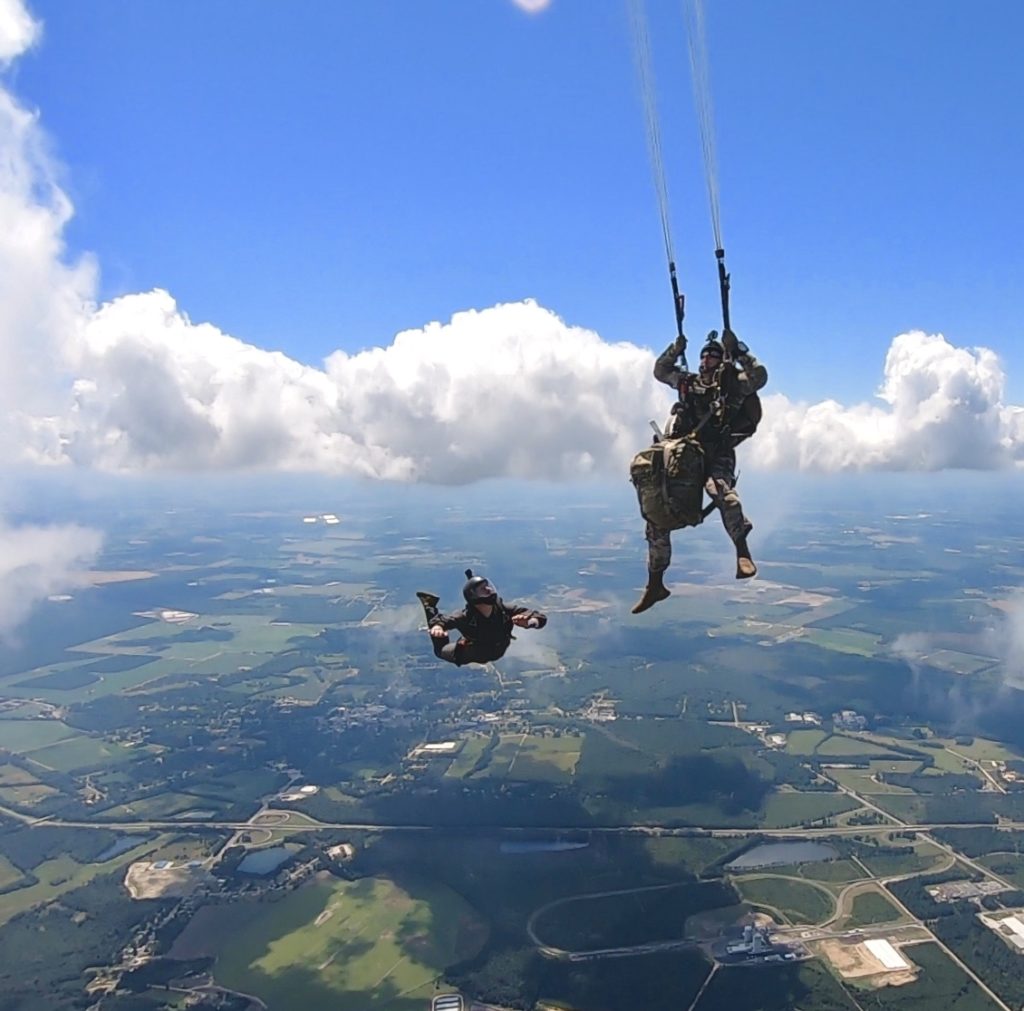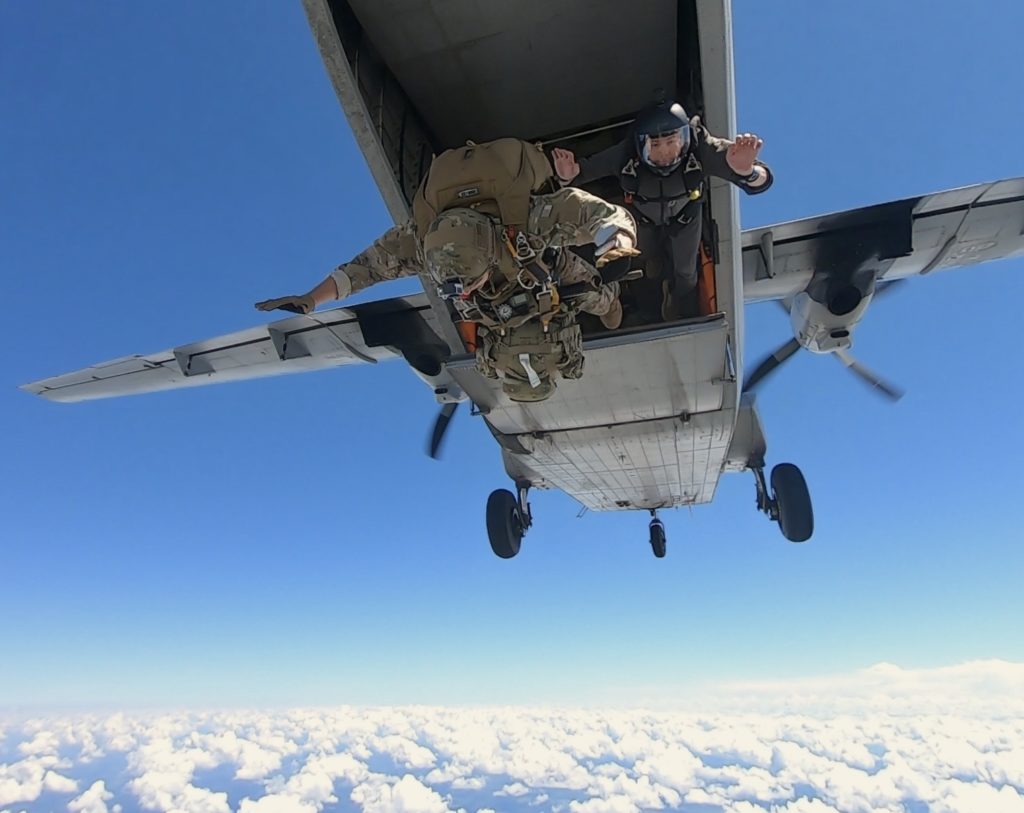
By Mr. Mike Shelton, Airborne and Special Operations Test Directorate, U.S. Army Operational Test Command
FORT BRAGG, North Carolina — Test jumpers here are making sure Special Operations Forces military freefall (MFF) parachutists can safely use their rucksacks without compromising their missions.
Risk reduction testing begins inside vertical wind tunnels, which simulates MFF conditions.
Airborne and Special Operations Test Directorate MFF-qualified test jumpers observe the Modular Lightweight Load-Carrying Equipment (MOLLE) 4000 rucksack under canopy of current parachute systems used by Special Operators.
A host of risk reduction measures ensure potential test items are safe and effective from the intended user’s standpoint, according to Mr. Mike Tracy, chief of ABSOTD’s personnel operations.
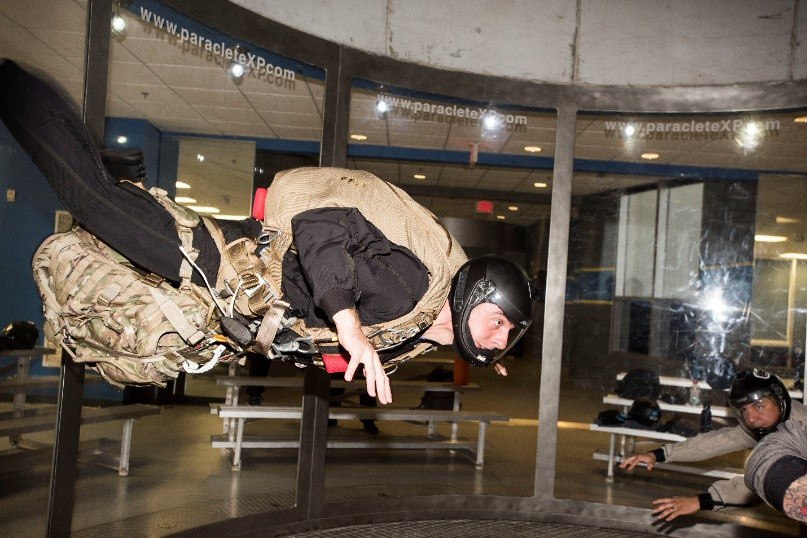
“We routinely take systems developed for the 5th – 95th percentile of all Soldiers to be used in ground combat and evaluate those items for forced entry operations,” said Tracy.
Following risk reduction testing in the wind tunnels, ABNSOTD takes their verdicts and conduct MFF operations out of a CASA 212 airplane to validate the rucksack’s safety and effectiveness.
Tracy said ABNSOTD serves both Soldiers and the airborne community as a whole.
“Most of these efforts go largely unknown in the airborne community as they are accomplished prior to the start of operational testing,” explained.
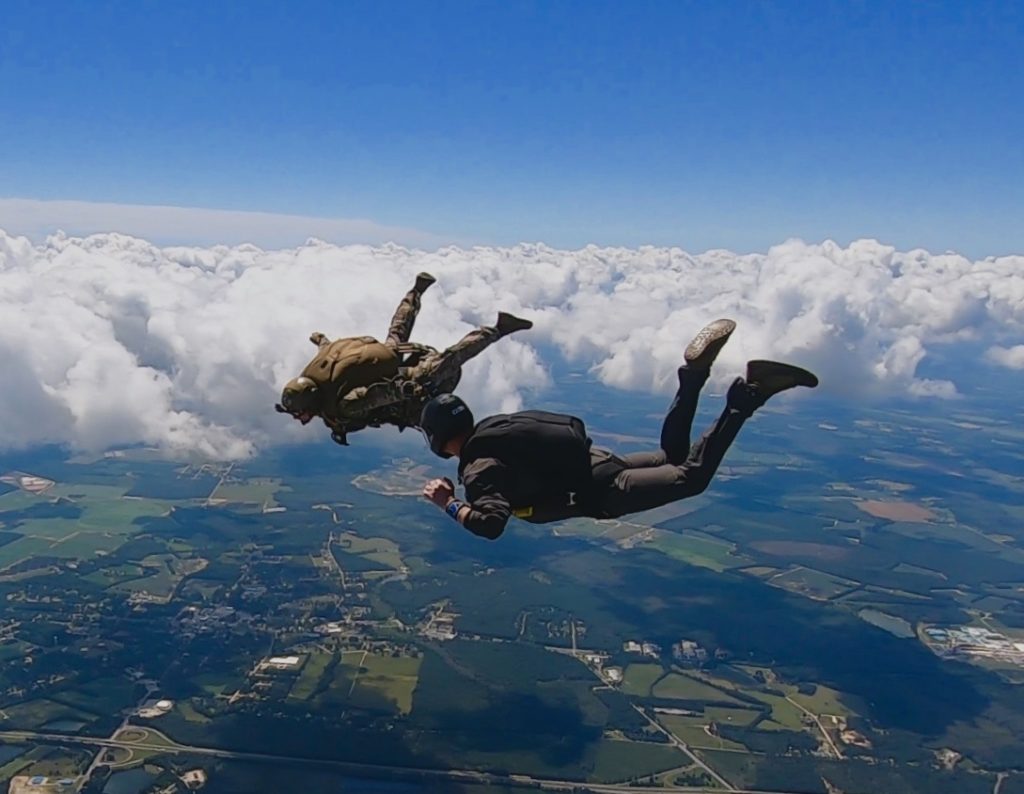
“We strive for ‘Truth in Testing’ while never compromising safety or performance,” he added.
One ABNSOTD test jumper explained the process he takes involving risk reduction efforts.
“Virtually all test items receive ground and reliability testing prior to airborne testing,” said Sgt. 1st Class Ross Martin. “It’s the test jumper’s job to ensure that the potential test item is suitable and effective from a paratrooper’s point of view.”
ABNSOTD’s chief of airborne testing said his outfit exists to serve both Soldiers and the airborne community.
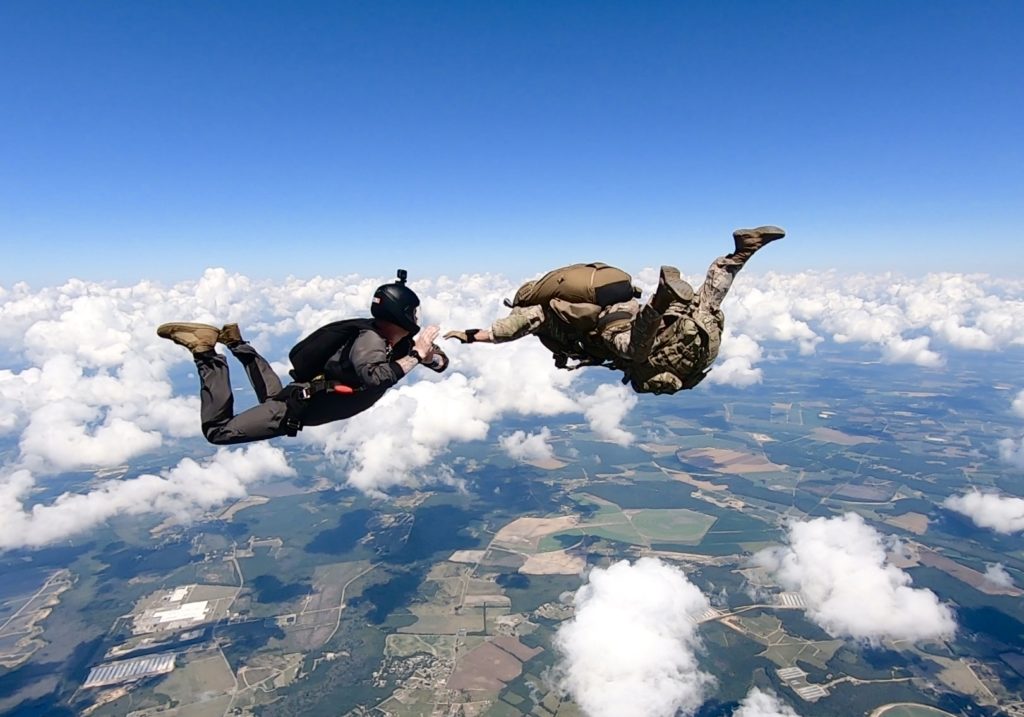
“Testing promotes and delivers a safe, and more durable piece of equipment to the Warfighter,” said Maj. Cam Jordan.
“Soldiers relish in participating in day-to day testing. It ignites their enthusiasm to rig and load a piece of equipment which will ultimately serve our future Soldiers during combat missions.”
Operational readiness is a key factor in testing airborne equipment, according to Col. Brad Mock, ABNSOTD’s director.
“Operational testing is a technique that our subject matter experts ensure the quality, performance of, as well as the operational readiness of the product tested,” he said.
“We ‘Test for the Best,’ conducting, rigorous, realistic, honest, service unique and joint testing; making sure the systems developed are effective in a Soldier’s hands and suitable for the environments in which our Soldiers in today’s Army train and fight.”
~~
About the U.S. Army Operational Test Command:
The Fort Bragg, North Carolina-based ABNSOTD plans, executes, and reports on operational tests and field experiments of Airborne and Special Operations Forces equipment, procedures, aerial delivery and air transportation systems in order to provide key operational data for the continued development and fielding of doctrine, systems or equipment to the Warfighter.
The U.S. Army Operational Test Command is based at West Fort Hood, Texas, and its mission is about ensuring that systems developed are effective in a Soldier’s hands and suitable for the environments in which Soldiers train and fight. Test units and their Soldiers provide feedback, by offering input to improve upon existing and future systems with which Soldiers will ultimately use to train and fight.
